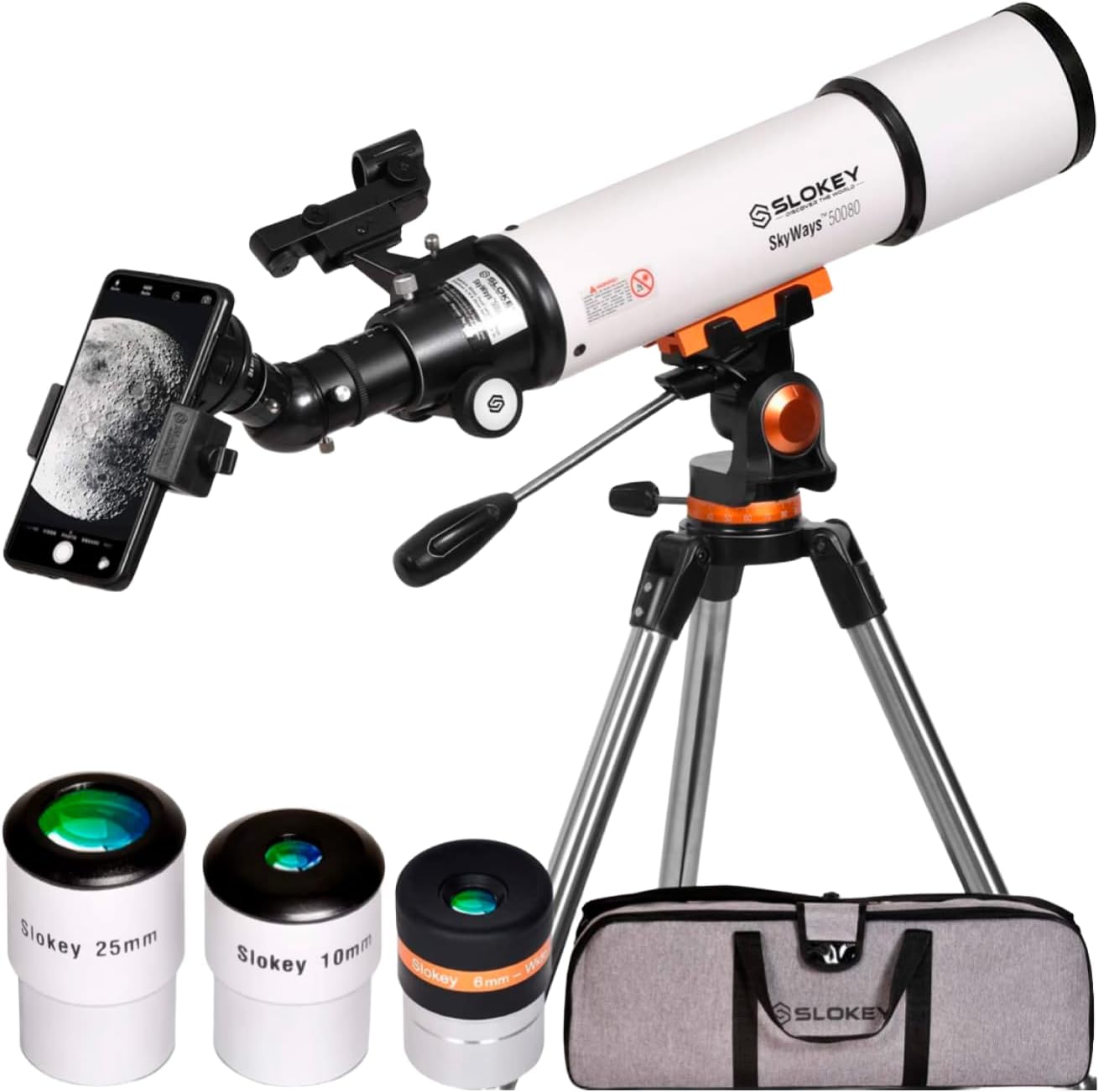
Telescope for Astronomy for Adult Beginners - Profesional, Portable and Powerful 20x-250x - Easy to Mount and Use - Astronomical Telescope for Moon, Planets and Stargazing - Includes a 2-Year Warranty
FREE Shipping
Telescope for Astronomy for Adult Beginners - Profesional, Portable and Powerful 20x-250x - Easy to Mount and Use - Astronomical Telescope for Moon, Planets and Stargazing - Includes a 2-Year Warranty
- Brand: Unbranded

Telescope for Astronomy for Adult Beginners - Profesional, Portable and Powerful 20x-250x - Easy to Mount and Use - Astronomical Telescope for Moon, Planets and Stargazing - Includes a 2-Year Warranty
- Brand: Unbranded
| RRP: | |
| Price: |
Description
There’s one design you should avoid at all costs: the “Bird-Jones” reflector. The Bird-Jones design uses a spherical primary, and a fast one at that, in an attempt to keep the tube shorter than average. Manufacturers of this design correct for spherical aberration and increase the focal length by placing a corrector lens at the inner end of the focuser. The corrector lens is supposed to make everything all right again, but it never does. The view through every Bird-Jones scope I’ve ever looked through has been uniformly awful. There might be a decent Bird-Jones telescope somewhere out there, but if there is, I’ve never seen nor even heard of it. A 3x Barlow lens and two eyepieces (25 mm and 10 mm) offer different magnification levels. The maximum power is 120x and will provide you with clear images of the moon, the planets and stars from afar. In addition, it includes a phone adapter to take photos and videos. The telescope is also practical to use for nature and animal observation. And I've seen cheap telescopes, and some not cheap, that are a lot worse than even 1/2 wave. Years ago I bought a used 12.5-inch f/6 reflector made by a major manufacturer; it had obvious spherical aberration, and when I had the primary mirror professionally tested, it came out as a smooth, 7/8-wave hyperboloid: well made to the wrong spec. Anything below about 3 inches (76 mm) in aperture is likely to be too small to provide a pleasing view of anything more than the Moon and a few bright star clusters. Small scopes tend to be low-quality, too, with uncorrected objective lenses that display color fringing around bright objects and often won’t even come to sharp focus. So as a general rule, stay above three inches in aperture. There are, of course, some very high-end small scopes, mostly optimized for astrophotography. The price tag will tell you which is which.
Gives fantastic clear imagery of the moon, Saturn’s rings and Jupiter’s moons, as well as nebulae and star clusters Perfectly suited to catching sharp view of comets and star clusters, the Cometron Firstscope is also powerful enough to provide you with clear detail of the mountains and craters on the Moon. Better Quality Tripod ...You will get a more professional and robust tripod to improve stability, offering you easier and more comfortable use of your telescope and better resolution images. Age and strength counts for something. "The best telescope is the one you use most often." True, with the exception of anything like what the author has laid out. I built my own 8" F/6 Dob 23 years ago, and the old bones are feeling that 30-lbs per section lift and carry; (plus chairs, eyepiece case, etc... it's in better shape than I am! ...hey, _I_ might wind up with a Starblast myself! (With a few mods....)
Compare Similar Products to Telescope for Astronomy for Adult Beginners - Profesional, Portable and Powerful 20x-250x
It comes with 20mm and 4mm eyepieces and a 3x Barlow lens to let you see even more of the objects around us by tripling the eyepieces’ power. This is the ideal telescope for beginners and hobbyists... You will get an adjustable power of 20x, 50x, 60x, 83x, 150x and 250x magnification for maximum detail. On the other hand, a good computerized mount can be an amazing experience. Several manufacturers now build systems that recognize the star field when you power them on and reliably know where to go when you tell them what you want to look at. It’s just that these good systems cost a fair amount of money, and you’re unlikely to get a good one at a beginner’s-scope price. The Orion StarBlast 4.5 tabletop reflector is an excellent starter scope. Recommendations
Aperture is represented by the diameter of the objective lens or primary mirror but is actually measured by the total surface area. Keep this in mind when comparing aperture sizes because it means that a 100mm lens can see 50% more detail than a 70mm lens. For the most part, telescopes with an aperture of less than 70mm are viewed as more of a toy than a scientific instrument. However, they aren’t always a bad choice when searching for budget telescopes or a way to view terrestrial objects. This Slokey telescope has a phone adapter that helps you to locate celestial bodies, eliminating the need to do so manually. Moreover, it has a red dot finder scope for the manual location of heavenly bodies. The SkyWays set likewise comes with a lightweight and fully adjustable alt-azimuth tripod that has a height range of 49cm to 132cm. The lower height option is a viable reason why it’s considered as one of the best telescopes for kids.
Recently Viewed
Nice to see articles like this regularly. So many get a trashy 60mm refractor with an equally trashy equatorial mount, and get turned off the whole hobby before they begin. Using an eyepiece with a shorter focal length will increase the magnification of your telescope. This is handy for observing the moon and planets. Attaching a Barlow lens to your eyepiece is another way to make your telescope more powerful (increase magnification). 4. How to aim a telescope?
- Fruugo ID: 258392218-563234582
- EAN: 764486781913
-
Sold by: Fruugo
